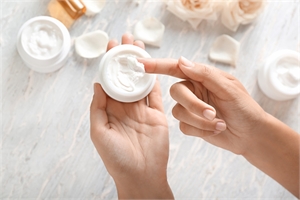
Cosmeceuticals are over-the-counter skincare products that contain biologically active ingredients. Underscoring their popularity, there’s been double-digit annual growth of new products entering the marketplace over the past decade and it’s been estimated that the global market value of the cosmeceutical industry will be $73 billion by 2023! Cosmeceuticals typically contain lower concentrations of active ingredients than prescription products and are classified as cosmetics by the FDA. Consequently, they do not have to undergo the same level of scrutiny with regard to safety and efficacy before entering the marketplace. With so many options available, how does one select the right products? A recent review article in the International Journal of Dermatology evaluates data for some of the most commonly used active ingredients in cosmeceuticals and came to the following conclusions:
Retinols have strong evidence for improving lines/wrinkles, pigmentation, elasticity, firmness, brightness, and overall photodamage. The product should contain at least 0.25% retinol to be effective.
Vitamin C (ascorbic acid) has strong clinical evidence for improving discoloration/pigmentation and for fighting ultraviolet-induced skin damage. Topical vitamin C is unstable and not all products are the same. It should be packaged in opaque airtight containers.
Glycolic Acid has strong clinical evidence to treat acne, fine lines, roughness, and pigmentation
Hyaluronic Acid has clinical support for improving skin hydration, elasticity, firmness, wrinkles, and roughness.
Collagen doesn’t have evidence to support its effectiveness topically. Collagen is a large molecule and is unlikely to penetrate the top layer of skin.
Keep in mind that formulations and stability can vary from product to product. Also, many claims are based on lab studies that don’t necessarily correlate with actual clinical results. Please schedule an appointment with your dermatologist if you have questions about your skin care products and routine.


